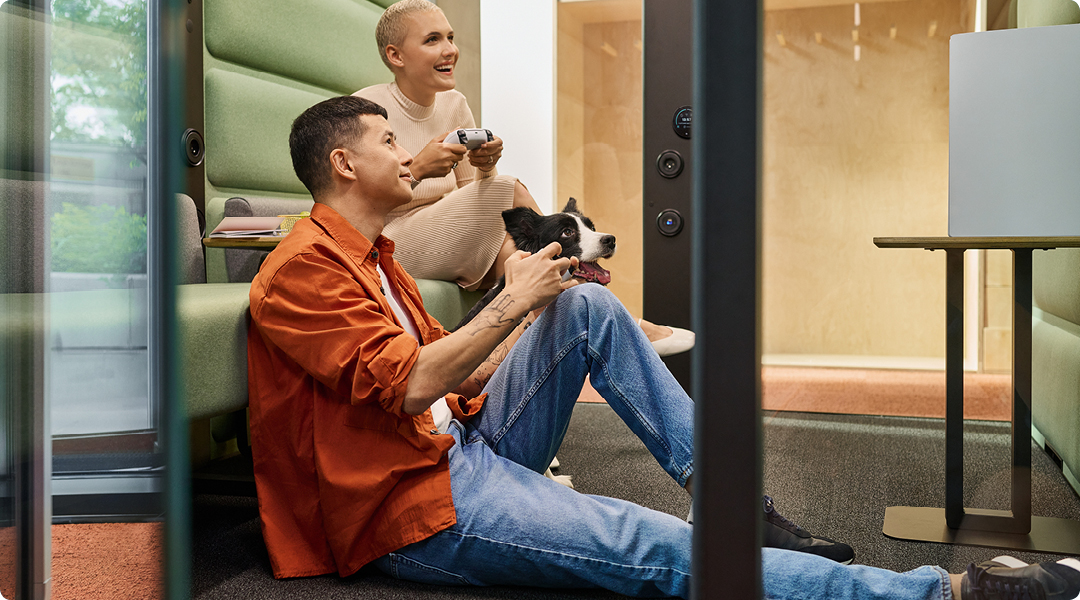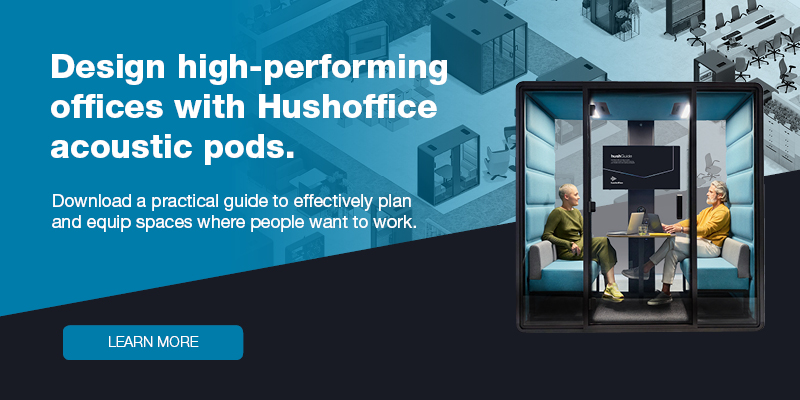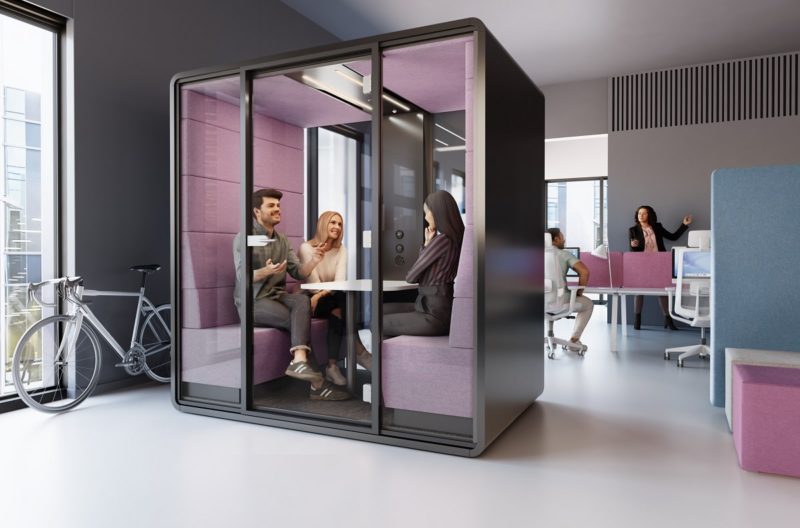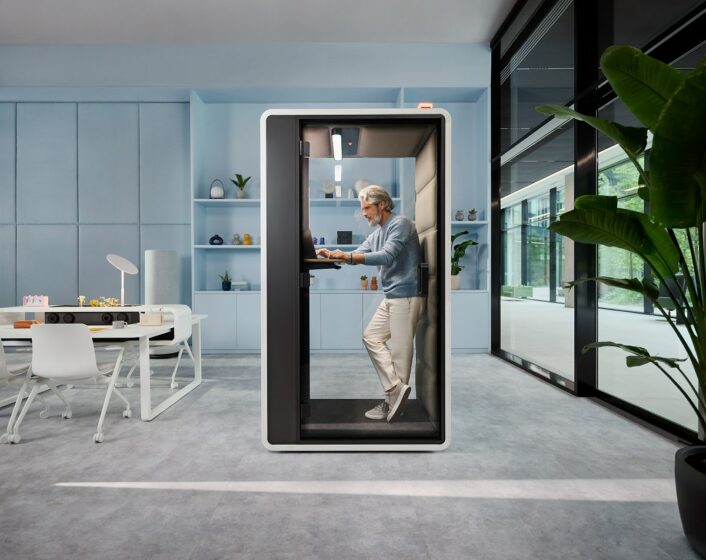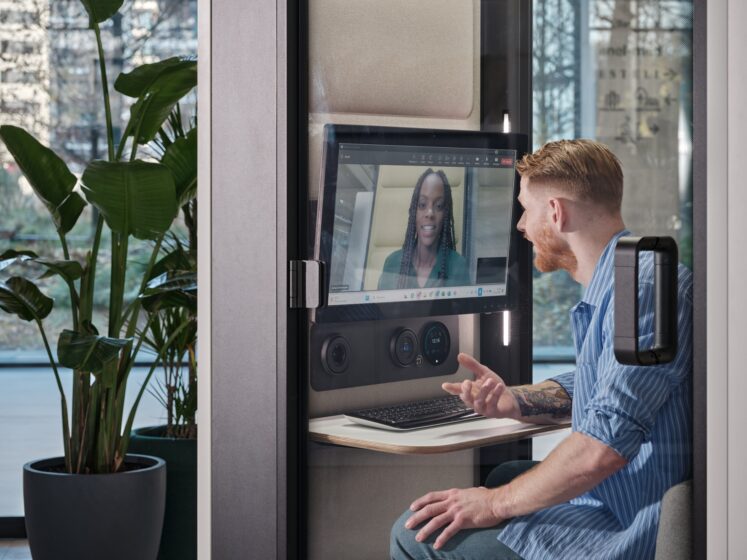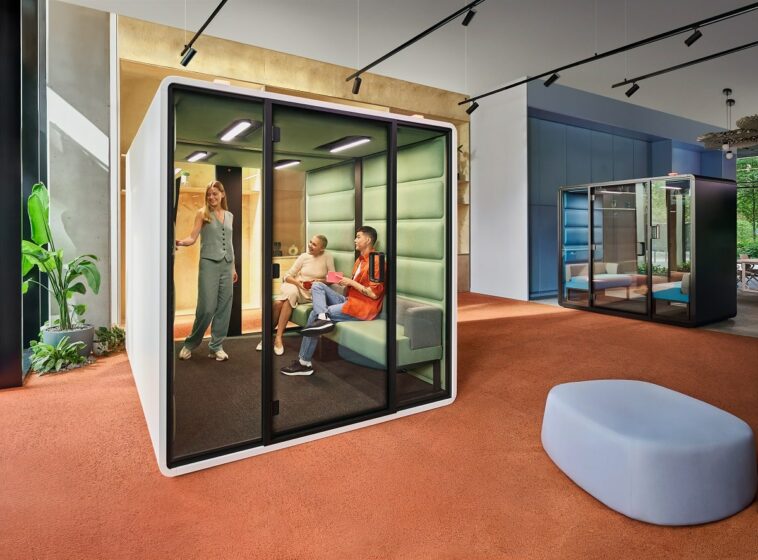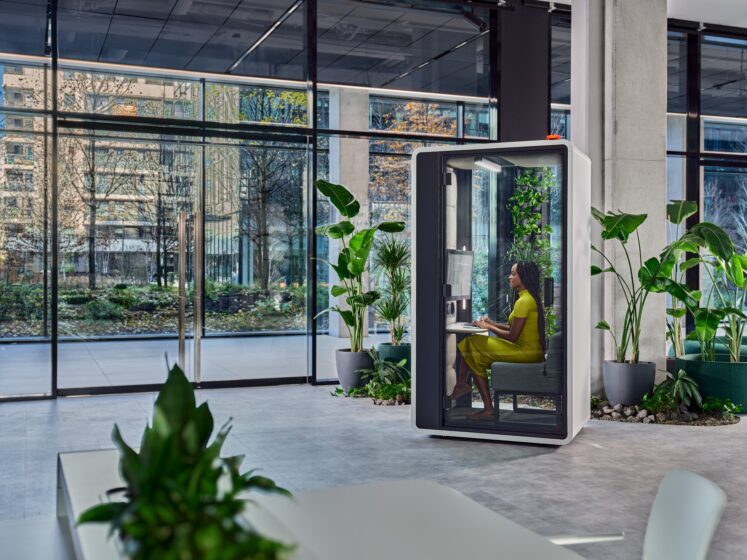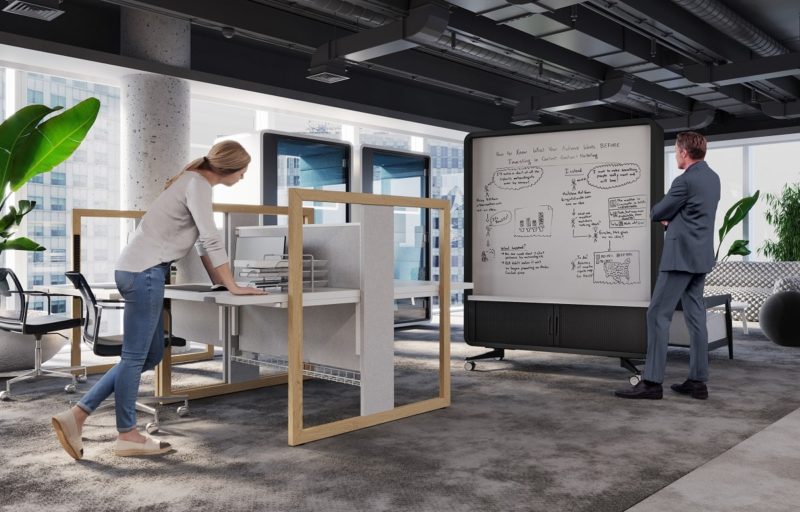Gamify hybrid meetings. It’s good fun.
- Posted on: 11 February 2025
- By: Hushoffice Team
Hybrid meetings often teeter on monotony, with checked-out participants and productivity lapses. But gamification can turn mundane discussion into interactive, goal-driven fun that energizes even the most dispersed teams. How to make every attendee feel like a winner? Let’s see.
Gamify hybrid meetings – tl;dr
- By leveraging psychological drivers such as autonomy, competence, and relatedness, gamification can help employees feel accomplished and connected to others. Properly implemented, it has the capacity to transform workaday activities into meaningful progress.
- The playful nature of gamification taps into our innate love for fun and competition, making even boring tasks enjoyable. It engages by offering instant feedback and rewards, setting into motion a positive cycle of focus and emotional fulfillment.
- Clear goals are essential in gamification to ensure the “game” remains a tool rather than a distraction. When combined with private spaces like the hushFree.M meeting booth, employees can dive into the playful experience without feeling observed, and can participate completely.
What is gamification?
Gamification leverages rewards and challenges to make tasks more interactive and amusing. In short, when you gamify a task, you turn it into more of a game, tapping into human desires for achievement, recognition, and fun. It is the use of game-like elements in “non-game” settings.
- Currently estimated at 19.42 billion, the market for gamification is expected to reach 61.30 billion by 2030.
Why does gamification work?
It leverages motivation, rewards, and instant feedback. Clear and simple goals plus measurable progress activate our dopamine pathways, lending a sense of satisfaction. This mix of external rewards and internal motivators is what really makes gamified tasks feel less like work and more like play.
- 88% of employees say more gamification of their job would make them happier at work. But only 43% say they encounter any gamified elements on a regular basis.
Sometimes unwittingly, people play games everyday to create moments of delight. Getting their steps in. Bringing the inbox down to zero. Even just crossing something off of the to-do list can feel like a game. Whether working or unwinding, games infuse the minutiae with a joy and lightheartedness. In this tech-driven world, they can unbridle our awesome response to fun we so love by turning routine tasks and functions into play. It can motivate us positively and forge social connections in a most simple and harmless way. So it is no wonder organizations are turning to games. When seemingly mundane tasks become a bit of good fun, everybody wins
– says Mateusz Barczyk, Senior Brand Manager, Hushoffice.
What forms does gamification take?
Gamification takes many forms. Point systems. Progress tracking. Badges. Leaderboards. In education, it can make learning playfully competitive. In fitness, it encourages consistent activity. At work, it can usher along smooth and steady progress.
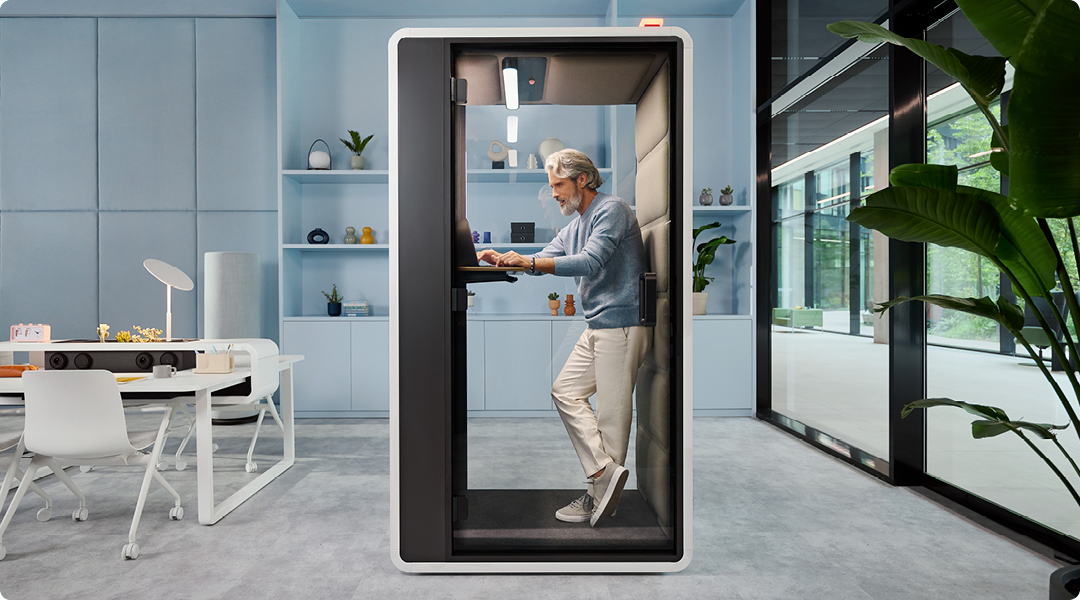
- 89% of employees say they would be more productive if their work was more gamified.
Gamification can build the spirit of a virtual team.
A good game is fun, friendly, and rewarding. As such, it can facilitate a unified experience that transcends digital boundaries, making dispersed teammates feel connected. The key is to keep it light, inclusive, and purpose-driven. Friendly competition should energize, not intimidate.
Friendly competition and rewards can make routine meetings more dynamic.
Massive organizations like Unilever utilize gamified training modules to educate employees, encouraging them to apply new skills at work. Indeed, the right interactive activities, thoughtfully executed, can catalyze more participation throughout any meeting. Real-time feedback is part of this.
- 83% of employees who receive gamified training report a sense of motivation. Meanwhile, 61% who receive non-gamified training report feeling bored and unproductive! It follows that 78% say gamification throughout the recruiting process would make the company more appealing.
From passive to active meeting attendees.
Intrinsic motivation arises from three aspects. Autonomy (a sense of choice). Competence. And relatedness (a connection to others). Gamification plays to all three aspects, letting people make meaningful choices at work, feel accomplished, and feel more connected to peers.
Gamification unites a distributed team in special ways.
Smartly leveraged, a little gamification can greatly humanize virtual working. By tapping into our natural inclinations, it can make isolated work more of a collaborative event. It is all about building a culture where people are driven and connected, no matter where they work from.
How to “gamify” hybrid meetings.
Gamification works because it taps into fundamental drives. Social connection. Mastery. Competition. Achievement. And perhaps most profoundly, the simple joy of play. It is powerful, applied to the seemingly dull, because it can turn said boring or mindless tasks into amusing and engrossing games. In our hybrid world, these choices, challenges, and narrative structures can give every meeting more shine
– says Mateusz Barczyk, Senior Brand Manager, Hushoffice.
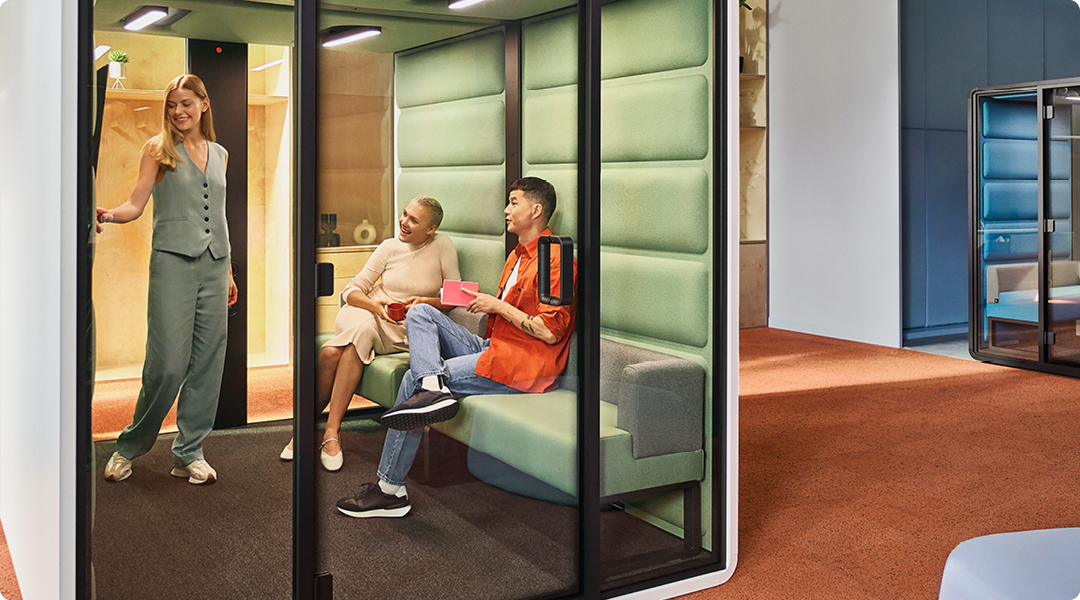
Activities to kick off the affair…
Quick, gamified activities can corral everyone’s attention while breaking the ice. Spending just a few minutes of silly trivia or “two truths and a lie” for instance may well set the playful tone necessary to inspire your team’s positive attitude right out of the gates.
Tasks and projects as games…
The meeting moderator should set aside some time to recognize achievements. Displaying rankings can also spark warm competition. Visualizing team achievements with progress bars or milestone trackers is similarly a beneficial way to involve and honor individual contributions.
Gamification platforms and tools…
Countless digital platforms can help to make meetings interactive and game-like. While quizzes, polls, and brainstorming challenges test knowledge, gather input, and celebrate creativity, task management tools can also be gamified.
Gamifying longer meetings…
Consider breaking content into stages with checkpoints acknowledging progress. A narrative (e.g., “Mission Accomplished”) can challenge teams to unlock stages, maintaining a sense of momentum. Along the way, powerbreaks will help keep energy high.
Customizing your gamification strategies is critical.
Without catering to personal motivations, gamification can be more distracting than helpful. Thoughtful customization to individual personalities can captivate, keeping people invested, while generic approaches may miss the mark and can even cause frustration.
Set defined rules and goals for gamification for your team.
By establishing boundaries and carefully aligning each activity with overarching objectives, you will ensure that gamification remains a tool, never a diversion. Clear rules and goals from the start will also prevent the addictive aspects of any game from overshadowing priorities.
Acoustic booths, a great support for gamified meetings.
Pods and booths like hushFree may be ultimate spaces for gamified meetings because they offer the ideal environment for full immersion. They are private, noise-free spaces freed of background hubbub. Their comfort is above par, with soft-upholstered panels affording a sense of hominess.
Inside a hushFree booth, the employee feels at peace in their space, with all their energy available for the meeting, none of it broken by office noise or visual happenings. Such pods and booths are wonderful also because they are available in many sizes, from the hushFree.S video call pod seating one person to the hushFree.L conference booth seating as many as six people depending on how it is furnished. Altogether they support an array of virtual meeting scenarios. And to add to that, they are mobile, so every new booth is an investment into a more workable office floor
– says Mateusz Barczyk, Senior Brand Manager, Hushoffice.
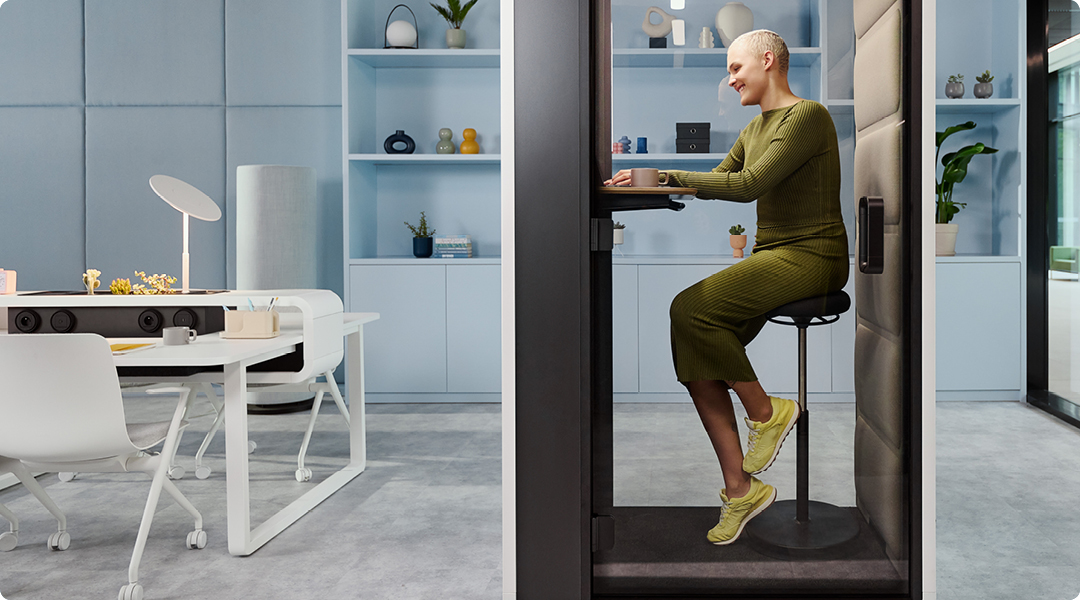
Proper sound insulation protects focus, nurturing engagement.
Noise impairs cognition, causing stress, and harming productivity. Controlled environments like hushFree booths solve this problem by blocking out interruptions, both auditory and visual. They allow the brain to devote more power to the task at hand rather than to filtering out distractions.
Pods and booths ensure privacy during gamified fun.
Anyone who feels they are being watched or listened to during a game will have some degree of anxiety, blocked creativity, or discomfort, making private spaces like booths key components of gamified meetings, tasks, and office spaces. In guaranteed privacy, one can engage without fear of judgment.
Check out the hushFree line of private, mobile work booths here.
Gamify hybrid meetings – summary
- By leveraging psychological drivers such as autonomy, competence, and relatedness, gamification can help employees feel accomplished and connected to others. Properly implemented, it has the capacity to transform workaday activities into meaningful progress.
- The playful nature of gamification taps into our innate love for fun and competition, making even boring tasks enjoyable. It engages by offering instant feedback and rewards, setting into motion a positive cycle of focus and emotional fulfillment.
- Clear goals are essential in gamification to ensure the “game” remains a tool rather than a distraction. When combined with private spaces like the hushFree.M meeting booth, employees can dive into the playful experience without feeling observed, and can participate completely.
Gamifying hybrid meetings – frequently asked questions
Why does gamification work?
Gamification sprinkles a spirit of adventure into the everyday. With tasks mapped, it makes the day a quest of completed milestones. Every milestone is like acquiring another coin of treasure.
What are some examples of gamification in everyday life?
Gamification can turn life’s small tasks into playful victories. Watching savings grow becomes leveling up in a financial quest. Finding the best shopping deal becomes a treasure hunt. Maintaining streaks for daily habits becomes unbreakable motivation. Calculating tips without a calculator exercises the mind while injecting a sense of competence into an otherwise boring event.
What are some easy ways to gamify hybrid meetings?
Collaborative challenges like building a shared mind map or solving a creative puzzle can be tied into any meeting’s larger theme. Storylines, like “saving the company spaceship” may sound corny but can open up people’s minds, allowing them to partake with curiosity.
